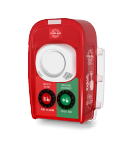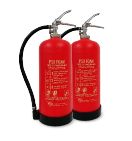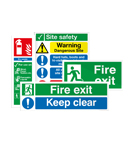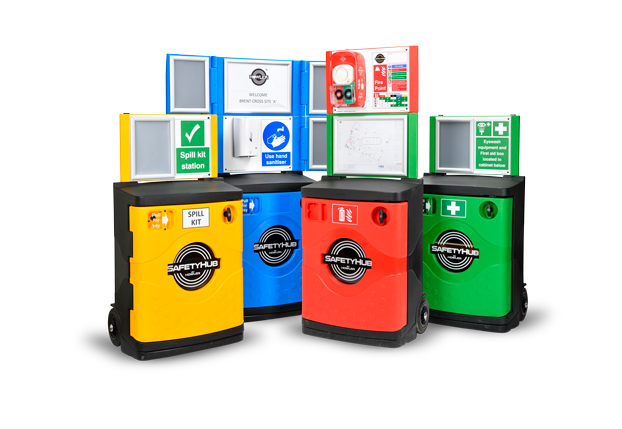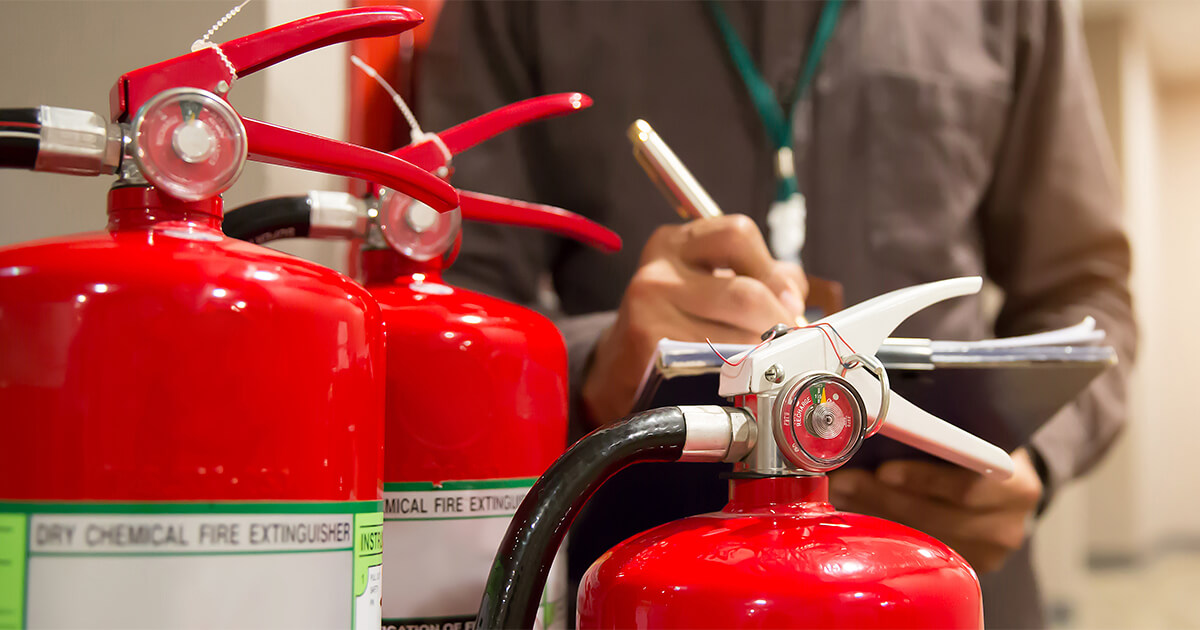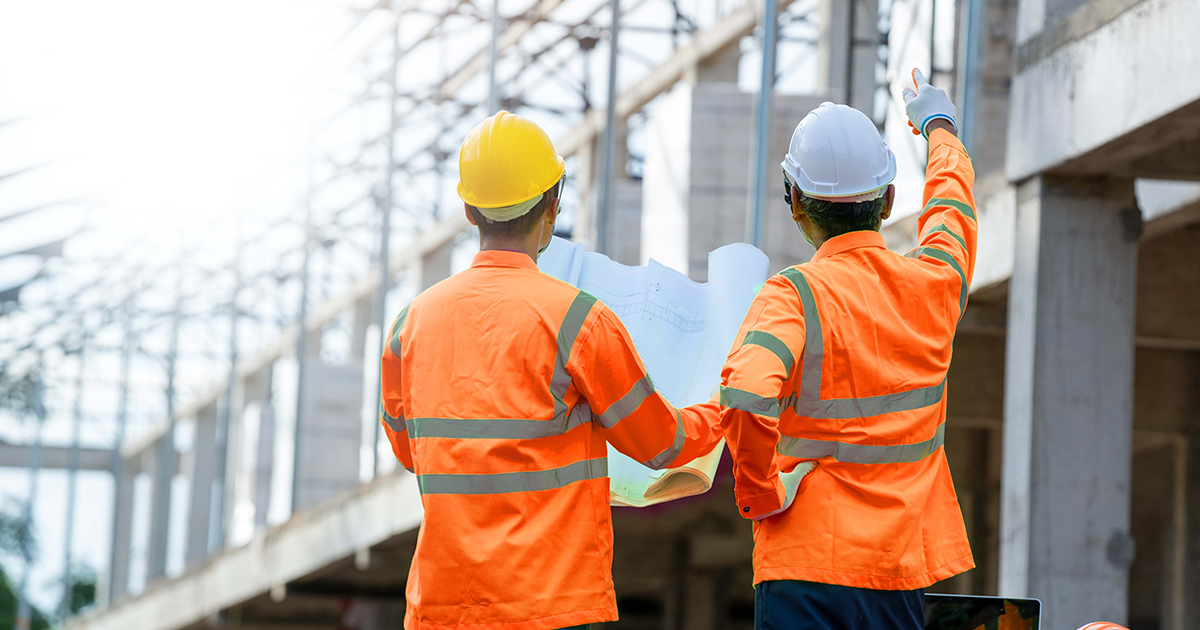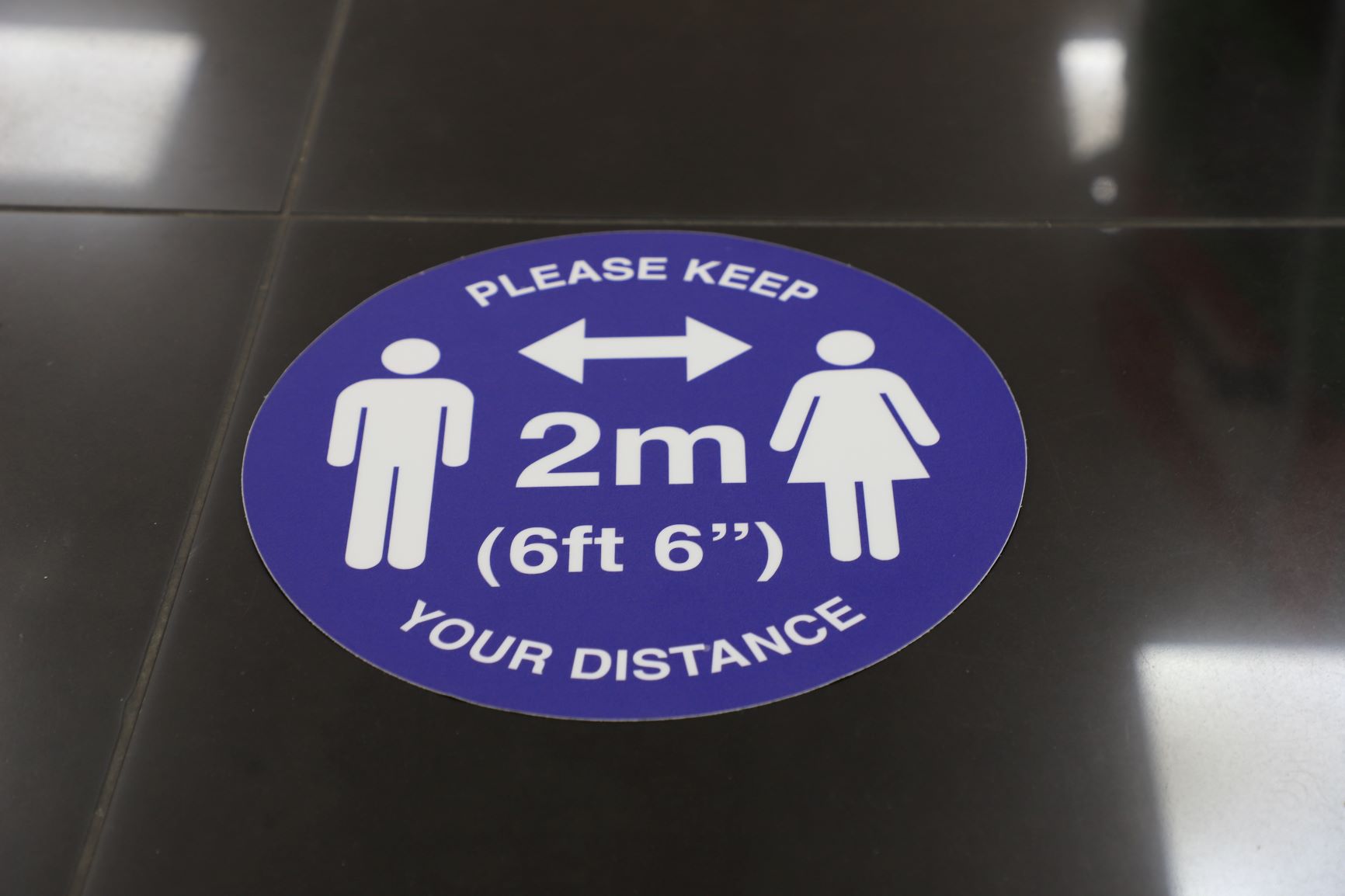We know construction sites are very dynamic environments, with changes happening daily. These changes affect not only the audibility of the fire alarm system but also the travel distances to fire points in the event of a fire, the number and type of extinguishers required and the wireless signal between devices.
As well as being fast-paced, sites can also be harsh environments where survival isn’t easy! With moving plant equipment and materials, damage can occur that impacts the effectiveness of the fire warning system.
Hence the need for routine checks of the escape routes, fire extinguishers, fire points and fire warning system.
What fire protection equipment do I need on-site?
Initially, obviously, the important thing is having the right equipment in the right places and adequate emergency systems in place. For guidance on how to conduct your site risk assessment, and assess what equipment you’ll need, download our Emergency Procedures & Fire Protection on Construction Sites document.
Full guidance on exactly what equipment is required for varying size sites and specific risks is given in HSG168 Fire Safety in Construction, downloadable directly from HSE. As this document is rather long, we have produced a series of posts explaining the basics covered by HSG168 – we suggest you read these to give you a general overview, then visit HSG168 itself for any specific queries or extra guidance on a particular risk.
Here are the links to our quick reads:
Provision of Fire Alarms & Extinguishers on Construction Sites
Specific Risks: Larger & High-Risk Sites
Specific Risks: Acetylene & Hot Work
Specific Risks: Stored Materials & Waste
Specific Risks: Electricity & Gas
Specific Risks: Plant, Vehicles & Smoking
In addition, we have a selection of printable checklists for you to fill in, to guide you through the requirements and to help you keep records of what’s done:
Site Set-Up Fire Safety Checklist
Shell-Up Fire Safety Checklist
Fire Extinguisher Audit Checklist


Once you’ve got everything in place, you need to be aware of exactly what checks you need to do, and when, and also what inspections are best done by professional contractors, in order to keep your fire safety equipment in good working order.
Here are the basics, as a reminder, but read on for more specific information for each category:
| Category | ‘In-house’ Inspection | Full inspection/service by a competent contractor |
| Fire Alarms & Emergency Lights | Weekly check | Six-monthly inspection |
| Fire Extinguishers & Hose Reels | Weekly visual check | Annual inspection |
| Fire Escape Routes | Weekly route walk | If advice is required |
| Fire Drill | Minimum six-monthly | If advice is required |
Fire Alarm Systems
HSG168 paragraph 228: The operation and effectiveness of the fire alarm system over the entire site should be:
- Routinely checked (weekly) and tested by a nominated and competent person; and
- Periodically serviced and any necessary rectification or repair carried out by a competent person having the appropriate level of training and experience
HSG168 paragraph 229: The work should be carried out in accordance with the supplier’s instructions or, where relevant, to an appropriate standard, for example, BS 5839:1 (at least every 6 months)
Any system, even the most basic ‘shout fire’ system needs to be tested weekly, to ensure it is working and to ensure it can still be heard throughout the site, particularly as the site progresses. Ideally do this at the same time/day each week and ensure everyone on site is aware that it will be just a test, not the real thing! Importantly, keep records of each testing, including, for example, which alarm unit was checked, or if there were any repairs needed. It is recommended that you test a different alarm unit each time so there is a greater chance of picking up individual unit problems.
Every six months, the fire alarm system should be fully serviced and repaired (usually done by a competent contractor) in accordance with the manufacturer’s instructions. On a long term site, this is often a good time to re-assess site requirements – are more alarm units needed to ensure full site coverage? Could better coverage be realised by relocating units?
Fire Extinguishers
HSG168 paragraph 236: Examine fire extinguishers and hose reels at least annually in accordance with a recognised procedure, such as that in BS 5306-3. The work should be carried out by a competent person who has received appropriate training.
It is also important that fire extinguishers are visually checked weekly – basically to ensure they are where they should be, and that they haven’t been used or damaged. Contact your fire extinguisher support company for repairs and replacements. It’s good practice to have a stock of spare extinguishers in good working order to use as temporary replacements so fire cover is not compromised at any time.
Annually, all fire extinguishers and hose reels need to be inspected in accordance with BS 5306-3, which is usually done out by a competent contractor, and any repairs or replacements carried out to ensure adequate fire protection on site.
Again, on longer-term sites, this is a good time to re-assess the location of fire extinguishers – see our guidance on Provision of Fire Alarms and Fire Extinguishers on Construction Sites for travel distances and recommended locations for fire-fighting equipment.
Our website also offers a ‘plan upload’ facility, so we can advise and quote on what equipment you would need for any particular site. Visit our Contact Us page to send us your site plans
Emergency Evacuation Procedures
In clear English, ‘Fire Drills’! As HSG168 states “It cannot be over-emphasised that the main aim is to ensure that everyone reaches safety if there is a fire.” (HSG 168 p33)
Joint Code of Practice Section 8.6: The emergency procedures should be tested by carrying out regular fire drills at least every six months, evacuating the building to the assembly point
Site operatives need to be fully aware of what they should do in an emergency, and the best way to ensure this is by undertaking regular fire drills. The minimum requirement is every six months, but if you have a high staff turnover it may be appropriate to carry out fire drills more frequently.
It’s important to review each fire drill and see if would be effective enough in a real emergency. For example, if it takes a good twenty minutes to clear the site, it raises questions about the effectiveness of your exit strategy! Perhaps personnel need more awareness of fire safety, or maybe your escape routes are complicated or inadequately signed. Don’t just carry out a fire drill in order to tick the box – assess it and if necessary make changes. Re-test to see if these changes make any difference. Remember, it could be the difference between life and death in the event of a serious fire.
If you need further advice on how to devise or sign escape routes, refer back to our General Fire Precautions guide or give us a call – sometimes it helps to have an independent pair of eyes in the situation. In addition, we can assist with keeping your Risk Assessment up to date
Fire Checks
Every day, the site should be checked for fire hazards and that the escape routes are clear of obstructions and combustibles, and that all signage is in place and visible. ‘Every day’ is important because of the rapidity with which things change on a busy site, and the possible high levels of personnel, each with their own job to do, with maybe little awareness that their workspace might be someone else’s emergency escape route
Ideally, at the end of each working day, walk the escape routes following the signage, and check for any obstructions, combustible materials or waste on or near the routes, ensuring this is moved before work commences on site again.
Other Equipment
There may be other checks you need to carry out if your site is large or if you have other fire safety equipment such as emergency lighting, fire hydrants, fire fighting lifts etc. The point to remember is, if you have safety equipment, make sure it is checked and maintained regularly! There is no point in having equipment that no longer works.
We hope this guide has helped clarify what you need to do to ensure your site is kept safe throughout the course of the project. We hope you’ll never need to use the escape routes or fire safety equipment in earnest, but we want to help you make sure that if an emergency did occur, all systems would work smoothly to prevent loss of life and property. If you have further questions, contact us today.
